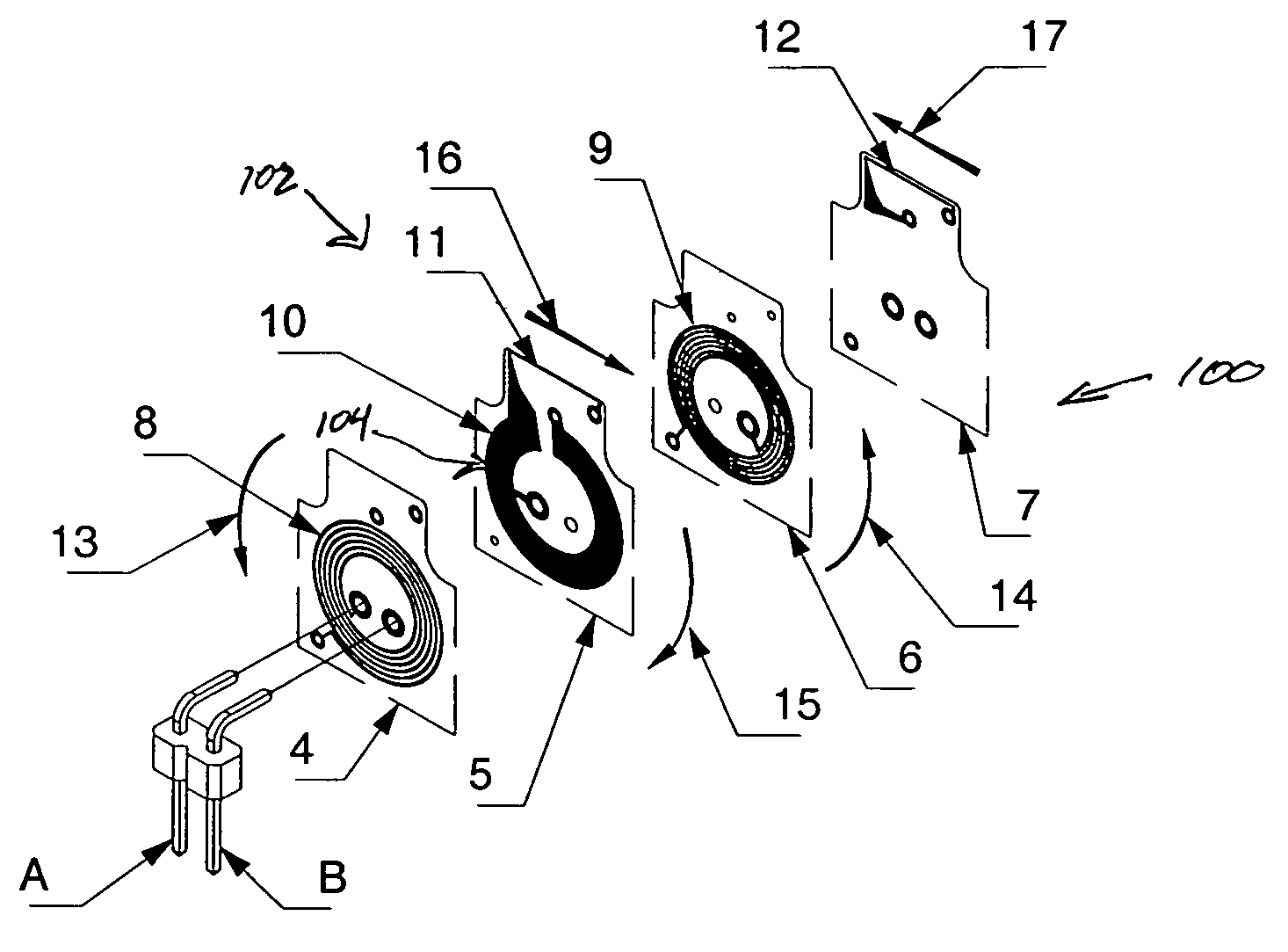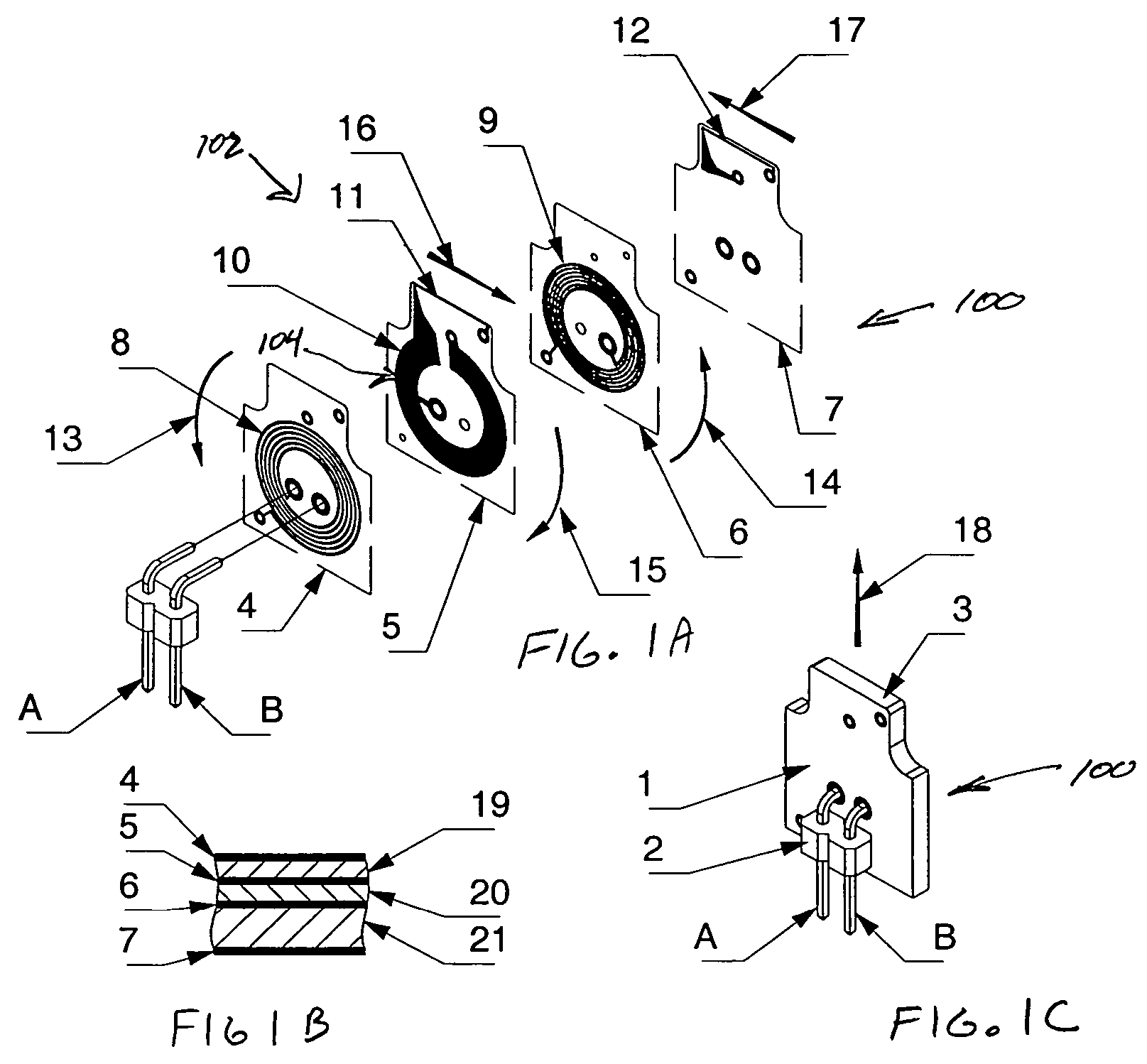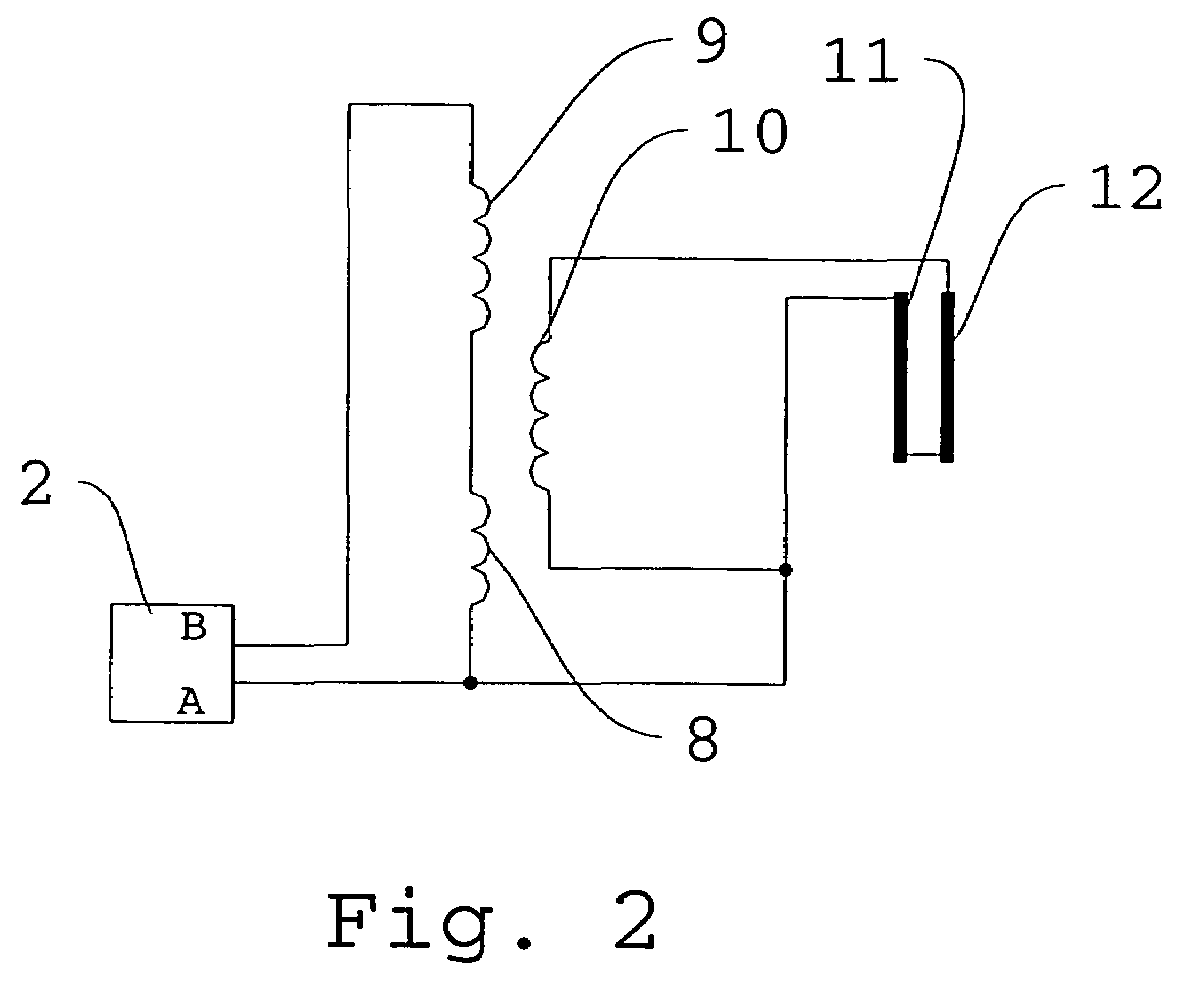Induction sensor using printed circuit
a printed circuit and induction sensor technology, applied in the field of induction sensors, can solve the problems of high probability of bill jamming, high cost of coils and other elements of this type of induction sensor manufacturing, and complex electronic circuitry or individual adjustment elements are often required, so as to improve the dependence of sensors signal and improve the effect of signal dependen
- Summary
- Abstract
- Description
- Claims
- Application Information
AI Technical Summary
Benefits of technology
Problems solved by technology
Method used
Image
Examples
Embodiment Construction
[0030]The planar induction sensor 100 shown on FIG. 1 comprises multilayer printed board 1 and two-wire connector 2. This sensor has active zone situated near edge 3 of the multilayer printed board 1. The multilayer printed board 1 comprises four active layers 4, 5, 6 and 7, said active layers are separated by glass fibre laminat separation dielectric layers 19, 20 and 21. All holes, shown on FIGS. 1A, 1B and 1C have inner metallization allowing connection between the wires in active layers 4, 5, 6 and 7 associated with the corresponding hole.
[0031]In active layers 4, 5 and 6 there is situated a current transformer 102 being formed by two series primary spiral-type coils 8 and 9 and a secondary one-turn coil 10. Secondary coil 10 of current transformer is connected to the operating coil 104 being formed by two wires 11 and 12. Wires 11 and 12 of the operating coil are situated in the nearest vicinity to sensing edge 3 of multilayer printed board 1.
[0032]Instant directions of alterna...
PUM
 Login to View More
Login to View More Abstract
Description
Claims
Application Information
 Login to View More
Login to View More - R&D
- Intellectual Property
- Life Sciences
- Materials
- Tech Scout
- Unparalleled Data Quality
- Higher Quality Content
- 60% Fewer Hallucinations
Browse by: Latest US Patents, China's latest patents, Technical Efficacy Thesaurus, Application Domain, Technology Topic, Popular Technical Reports.
© 2025 PatSnap. All rights reserved.Legal|Privacy policy|Modern Slavery Act Transparency Statement|Sitemap|About US| Contact US: help@patsnap.com



